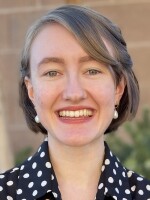Years ago, you’d hear “public health,” and more than likely, you’d shrug. Then the COVID-19 pandemic hit.
No one ignores it now.
And the virus remains, people are still getting sick from it and experiencing long-term effects. In Southern Nevada, 48 people died over six weeks as of February 27. By about the same time, Clark County has seen about 100 new COVID cases per day.
Though these numbers seem high, physicians say they’re lower than they would be if the community hadn’t implemented key disease mitigation tactics.
“One, the treatment’s there,” said Dr. Rosanne Sugay, a medical epidemiologist with the Southern Nevada Health District, referencing current anti-viral medications like Paxlovid.
“Two, people have gotten vaccinated. Three, people have gotten COVID. So, when you look at the population immunity, it is much better now than it was when it started. We didn't have any immunity to COVID — it was a novel disease. And so with that rise in immunity in the population, the response to the disease when they are infected by COVID is less.”
Sugay noted that the CDC’s reduced COVID guidelines (people can return to normal activity after they've been fever free for about 24 hours) show a more pragmatic approach by public health experts to containing the virus.
“From a public health perspective, we're moving towards this harm reduction lens for everything,” she said. “And so it's a question of the public understanding that they want to keep themselves healthy and keep others healthy as well, and [they] take the steps to do that.”
Regardless of transmission rates, experts still advise staying current on COVID boosters to keep herd immunity high.
Beyond COVID-19, Candida auris is on the rise in local hospitals. A few weeks ago, the Health District reported Nevada had the worst month for transmission ever recorded in January, with 202 infections. This marks a 24 percent increase in infections since October.
Dr. Brian Labus, an epidemiologist and assistant professor at UNLV’s School of Public Health, said that the uptick in cases is hard to get ahead of, especially in hospital settings.
“The problem is hospitals are open to the public,” Labus said. “Somebody gets sick, they go into the hospitals, and they bring diseases with them. So, this isn't something we can simply engineer to keep out of the hospital. Yes, we can have approaches to cleaning rooms, we can have infection prevention steps that prevent disease going between patients. But as soon as you have patients showing up in the hospital, they're going to bring things in with them … And so that's the challenge dealing with these healthcare-acquired infections, is it's something that gets into that environment and it's difficult to remove.”
Yet another statewide public health challenge is mental health, and Nevada is in desperate need of improvement. Experts say this is especially true for childhood mental healthcare, which is increasingly being treated by pediatricians instead of by specialists.
“[Mental healthcare has] been incumbent upon pediatricians for decades,” said Dr. Tal Minuskin, a pediatrician and owner of Kiddies’ Pal Pediatrics. “The lack of pediatric psychiatrists in the U.S. has been a major burden and it’s left the treatment upon the general pediatricians in rural, suburban, and even urban centers.
“In Vegas, we don't have very many pediatric psychiatrists, as well. So, in general from the early 2000s, ADHD, for instance, has been diagnosed mostly by general pediatricians, (as well as) and mood disorders.”
This leads to an overburdening of general pediatric offices, along with a reduction in the quality of care children receive for mental and behavioral health conditions.
Yet, among all the unknowns in the local public health sphere, there are promising developments. One is UNLV’s new rheumatology fellowship program, which gained approval in mid-February and is the first of its kind in the state. The program, which will be admitting four fellows total in its first two years, is directed by Dr. Mitchell Forman.
Forman hopes the fellowship brings the community one step closer to solving the critical lack of rheumatologists in the state, where only 29 rheumatologists serve 2.3 million Southern Nevadans.
“It's sort of a drop in the bucket,” Forman said. “But it's so exciting, the fact that we were able to do it and do it in a way that will allow us to potentially grow the number of physicians here. You can't guarantee that people who go through our program will stay here, [but] we'll do everything possible to make it more valuable for them to remain in Nevada, where we desperately need them.”
Guests: Dr. Rosanne Sugay, medical epidemiologist, Southern Nevada Health District; Dr. Tal Minuskin, owner, Kiddies' Pal Pediatrics; Dr. Mitchell Forman, director, UNLV's Rheumatology fellowship program; Brian Labus, epidemiologist and assistant professor, UNLV’s School of Public Health









